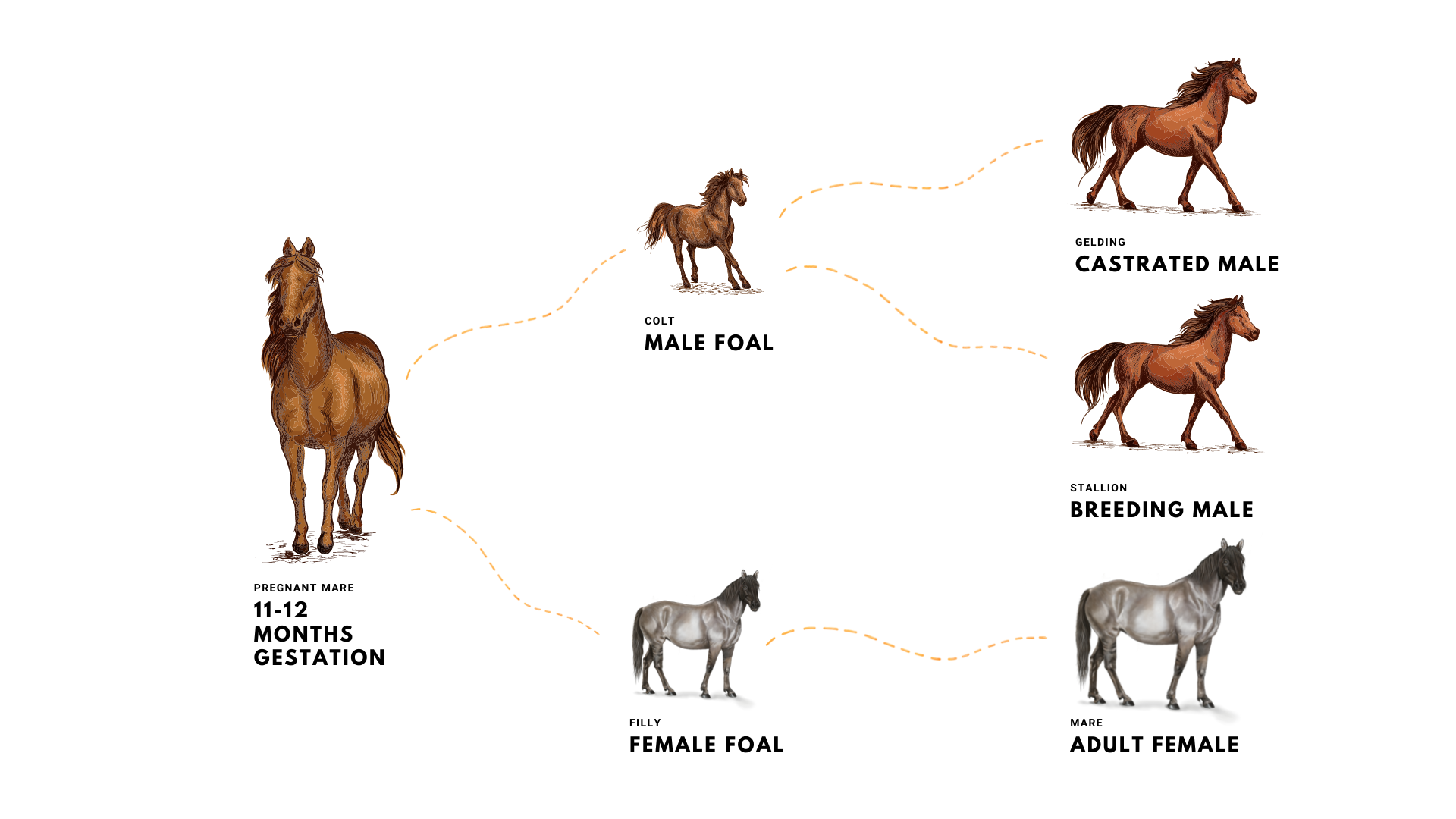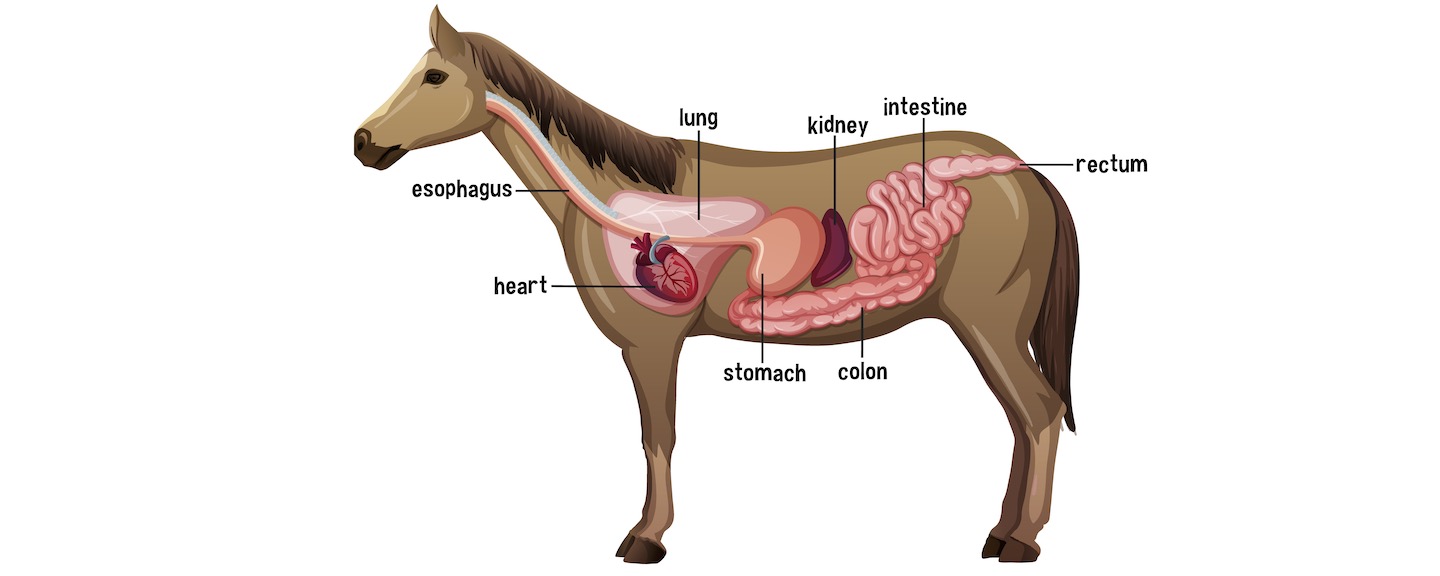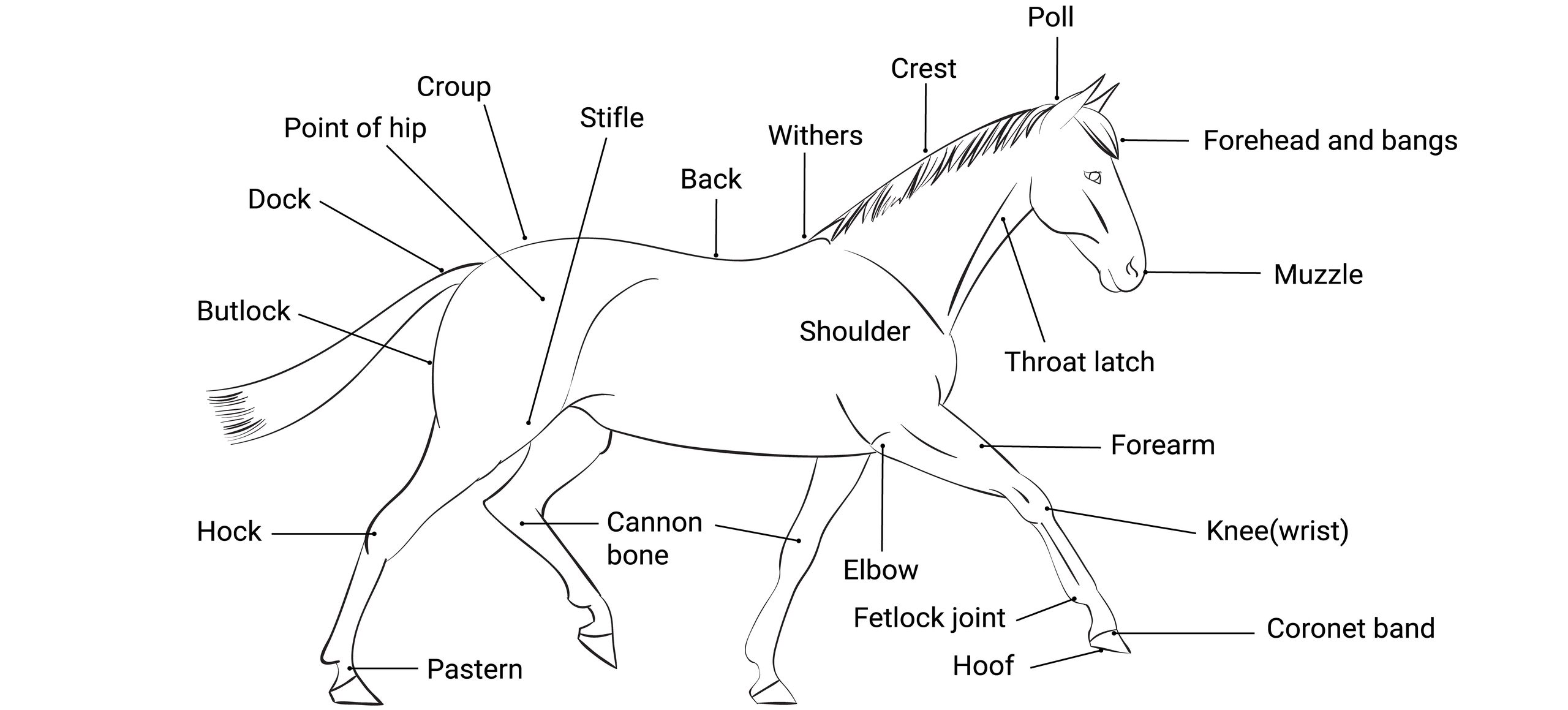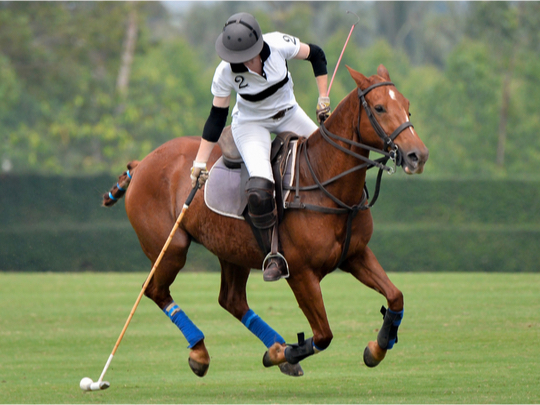What do horses eat?
Horses have very specific dietary needs because they are herbivores and have a very unique digestive tract quite different to humans. Their long digestive system requires a high-fibre diet that is consumed in small amounts over a long period of time.
The natural diet of horses is pasture grass and tender plants. Good pasture contains most of the nutrients that a horse requires to be healthy. It also contains silica which is important for dental health.
Many of us don't have the luxury of being able to let our horses graze on pasture throughout the whole year. When grass isn't available, hay is the next best choice. Finding good horse hay can be tricky. It helps to have hay tested so that any shortfalls in vitamins and minerals can be compensated for with supplements.
Reproduction

In summer, longer days with increased natural light encourage mares to come into season. This means that naturally, foals should be born in Spring or Summer. However, the ideal time for young sport horses and racers to be born is January. This is so that foals reach competition age sooner. Typically, horses are brought inside in December and brought into season through the use of artificial lighting. The stable lights are kept on until 23:00 to mimic a long summer's day. In UCD, researchers have been investigating the use of blue light masks to encourage the same reproductive activity with good success. This means that horses can graze outdoors and do not have to be confined to a stable for winter.
Once mares are in season, the use of live cover (natural mating) or artificial insemination (AI) puts a mare in foal. Mares are pregnant for 11 months and give birth to either a colt foal or filly foal.
Breeds of Irish Horses
Connemara Pony
Connemara Pony
Is a native pony originally from Ireland’s west coast, its popularity is extensive worldwide. The Connemara has exceptional characteristics which include a calm temperament, staying power, intelligence, soundness and athleticism. These characteristics mean the pony is considered a wonderful modern riding mount for child and adult alike. Crossed with the Thoroughbred, the Connemara produces an exceptional and versatile sport horse.
Irish Cob
Irish Cob
Was developed by the Travelling Community in Ireland. For hundreds of years these sturdy, hardworking horses pulled wagons and carts throughout Ireland, Britain and Europe. The breed adapted to be strong and versatile. They needed to be gentle enough to be handled by children but sturdy enough to pull a wagon all day. Irish Cobs have an imposing appearance with a stout, powerful body. They are noted for their high knee action, excellent temperament and flowing hair.
Irish Draught Horse
Irish Draught Horse
Developed as a working horse on Irish farms with references to the breed dating as far back as the 18th century. Due to the small size of farm holdings in Ireland at the time, most farmers could not afford to keep more than one horse and as a result Irish breeders developed an adaptable draught horse capable of carrying out all of the work on the farm as well as being used for riding, hunting and driving. The characteristics of the breed make them an ideal leisure and riding horse and their wonderful temperament makes them easy to work with in any discipline.
Kerry Bog Pony
Kerry Bog Pony
Is a small sturdy Native Breed standing approximately 102-117 cms for stallions and 102-112 cms for mares. The Kerry Bog Pony has a fine, intelligent head with large kind eyes. It has a strong and well set neck, with a rounded shoulder and compact body. The Kerry Bog Pony is extremely hardy, resistant to many equine diseases, with great powers of endurance. It has ample bone, and can carry heavy burdens in relation to its build. Traditionally it would have been used as a pack animal carrying heavy loads.
Irish Warmblood
Irish Warmblood
Was established in 2009 through the Minister of Agriculture’s approval of the Warmblood Studbook of Ireland (WSI), and in 2014 the studbook became a Full Member of the World Breeding Federation for Sport Horses (WBFSH). Irish Warmblood youngsters already are making a big impression. Many have been exported to Germany, South America, Great Britain, and Northern Ireland, and the studbook 4, 5 and 6-year-olds approved stallions and mares have dominated the young horse showjumping championships.
Anatomy of a Horse


Uses of Horses
In the days before mechanisation, horses were an essential part of farming in Ireland. They were used to plough fields.
In the past horses were also used for transportation in terms of pulling carriages and carts. They were known as pack animals to carry heavy loads. Furthermore, stories have been told that the Normans and Oisin i dTír na nÓg arrived in Ireland on horseback as that was the only form of transport back then.
Today, horses are kept for breeding or for pleasure or usually a combination of both. There are three main sectors to the horse industry on Ireland’s farms, including racing, breeding and equestrian sports. Irish horses are in demand worldwide, with exports to 40 countries. A long tradition of skilled horsemanship is a key reason, as is the fact that our limestone soils provide ideal grazing for healthy equine bone growth.
The racing industry is a major national importance in terms of employment especially in rural areas as well as in exports and tourism. The industry is worth hundreds of millions of euro of economic activity, sustaining jobs and a national network of racecourses, breeders, trainers and farms with an enviable skill base.
Some of the main racing locations in Ireland include Leopardstown, Co. Dublin, Fairyhouse, Co. Meath, Punchestown, Co. Kildare and of course Cheltham in England and Ascot in East Berkshire, England.
Hunting with hounds is a tradition in Ireland that goes back to ancient times and features strongly in Celtic literature and legend, but never in our history has hunting been so popular. It is quite common to find three generations of a family hunting together.
Show jumping is a sport for horses and riders which tests the horse's ability to jump over a course of fences at a predetermined pace.The most common class is called a Grand Prix where riders jump a standard round with the aim of achieving the lowest number of faults. If a number of riders finish with zero or an equality of faults, they jump off over a shortened course against the clock.
The Horse Show takes place in the RDS in Dublin every year where the main Irish and International Showjumpers take part and compete against each other in various categories in order to win the Aga Khan Jumping Nations Cup.
Fun Facts:
Horses can sleep both lying down and standing up.
Horses have around 205 bones in their skeleton.
Did you know that horses are measured in hands?
